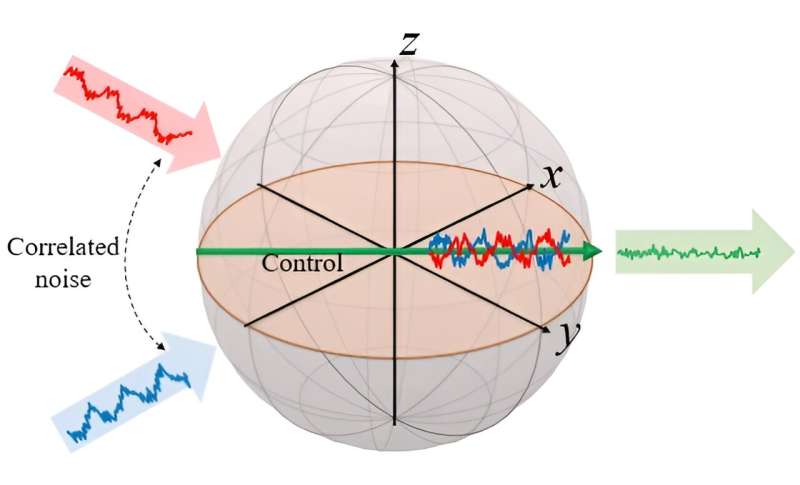Researchers have developed a new method to significantly enhance quantum technology performance by using the cross-correlation of two noise sources to extend coherence time, improve control fidelity, and increase sensitivity for high-frequency sensing. This innovative strategy addresses key challenges in quantum systems, offering a tenfold increase in stability and paving the way for more reliable and versatile quantum devices.
The work is published in the journal Physical Review Letters.
Researchers have made a significant breakthrough in quantum technology by developing a novel method that dramatically improves the stability and performance of quantum systems. This pioneering work addresses the longstanding challenges of decoherence and imperfect control, paving the way for more reliable and sensitive quantum devices.
Quantum technologies, including quantum computers and sensors, hold immense potential for revolutionizing various fields such as computing, cryptography, and medical imaging. However, their development has been hampered by the detrimental effects of noise, which can disrupt quantum states and lead to errors.
Many traditional approaches to mitigating noise in quantum systems primarily focus on temporal autocorrelation, which examines how noise behaves over time. While effective to some extent, these methods fall short when other types of noise correlations are present.
The research was conducted by experts in quantum physics, including Ph.D. student Alon Salhov under the guidance of Prof. Alex Retzker from Hebrew University, Ph.D. student Qingyun Cao under the guidance of Prof. Fedor Jelezko and Dr. Genko Genov from Ulm University, and Prof. Jianming Cai from Huazhong University of Science and Technology. They have introduced an innovative strategy that leverages the cross-correlation between two noise sources.
By exploiting the destructive interference of cross-correlated noise, the team has managed to significantly extend the coherence time of quantum states, improve control fidelity, and enhance sensitivity for high-frequency quantum sensing.

Key achievements of this new strategy include:
- Tenfold increase in coherence time: The duration for which quantum information remains intact is extended ten times longer compared to previous methods.
- Improved control fidelity: Enhanced precision in manipulating quantum systems leads to more accurate and reliable operations.
- Superior sensitivity: The ability to detect high-frequency signals surpasses the current state-of-the-art, enabling new applications in quantum sensing.
Salhov said, “Our innovative approach extends our toolbox for protecting quantum systems from noise. By focusing on the interplay between multiple noise sources, we’ve unlocked unprecedented levels of performance, bringing us closer to the practical implementation of quantum technologies.”
This advancement not only marks a significant leap in the field of quantum research but also holds promise for a wide range of applications. Industries that rely on highly sensitive measurements, such as health care, stand to benefit enormously from these improvements.
More information:
Alon Salhov et al, Protecting Quantum Information via Destructive Interference of Correlated Noise, Physical Review Letters (2024). DOI: 10.1103/PhysRevLett.132.223601
Citation:
New method achieves tenfold increase in quantum coherence time via destructive interference of correlated noise (2024, July 10)
retrieved 10 July 2024
from
This document is subject to copyright. Apart from any fair dealing for the purpose of private study or research, no
part may be reproduced without the written permission. The content is provided for information purposes only.

